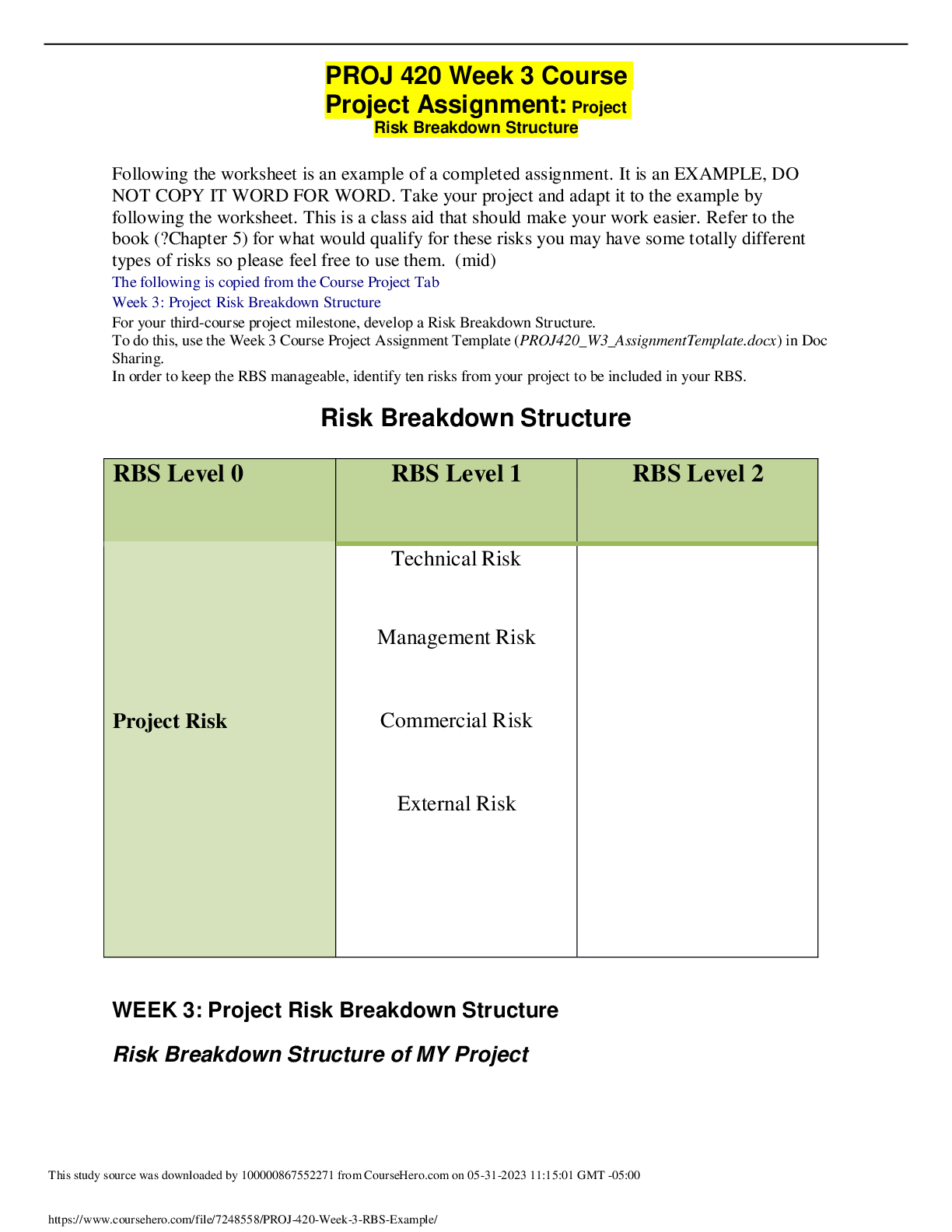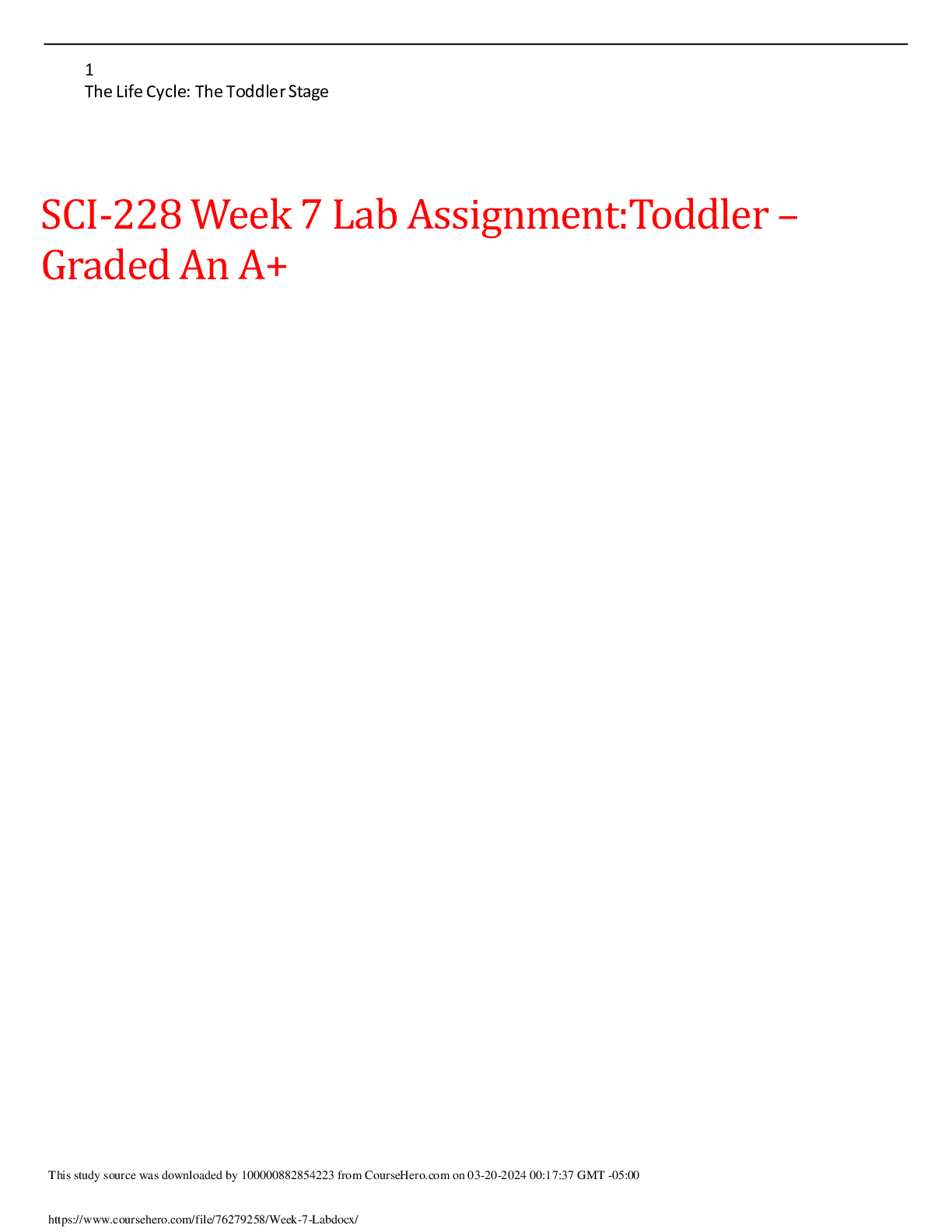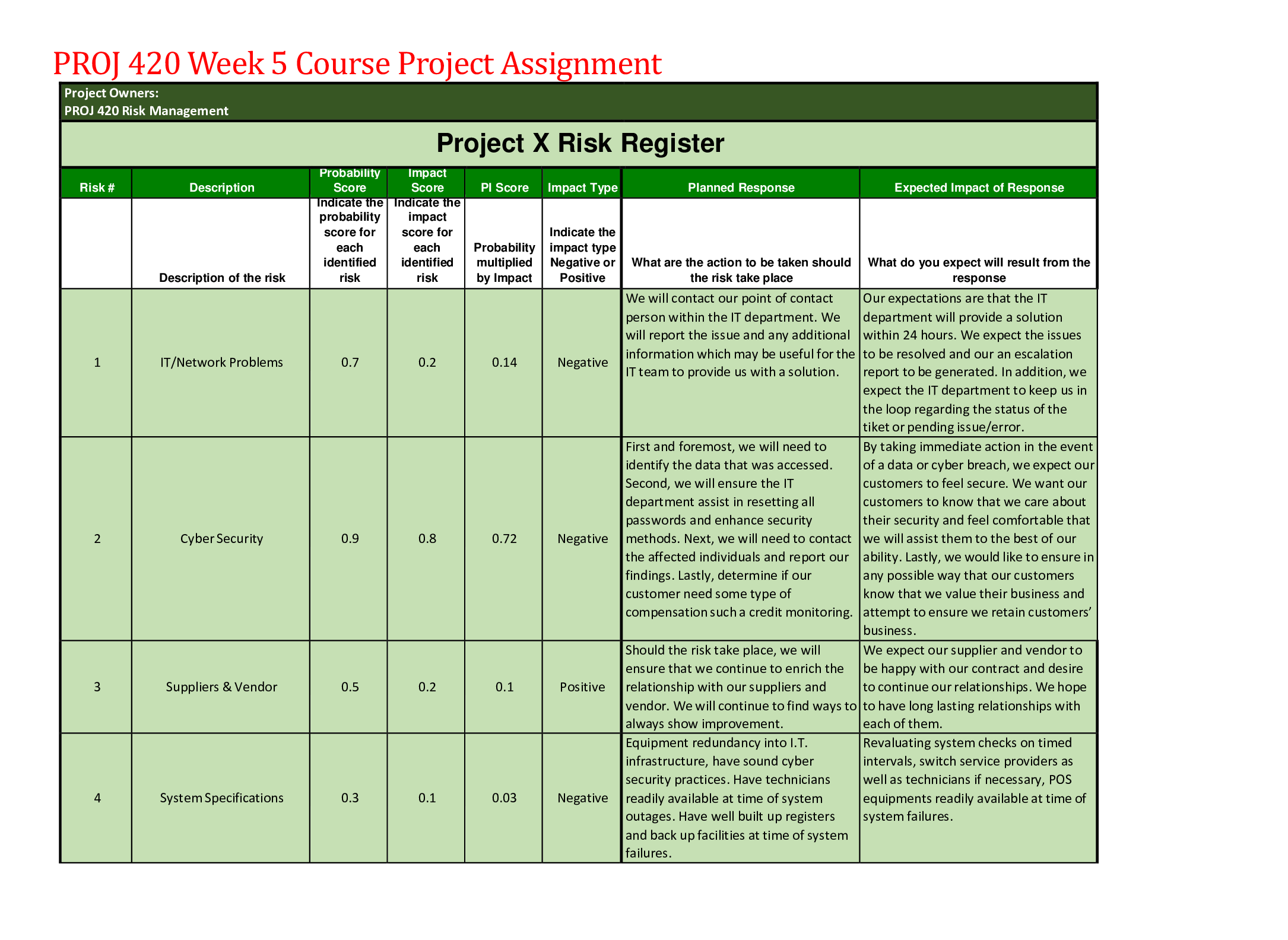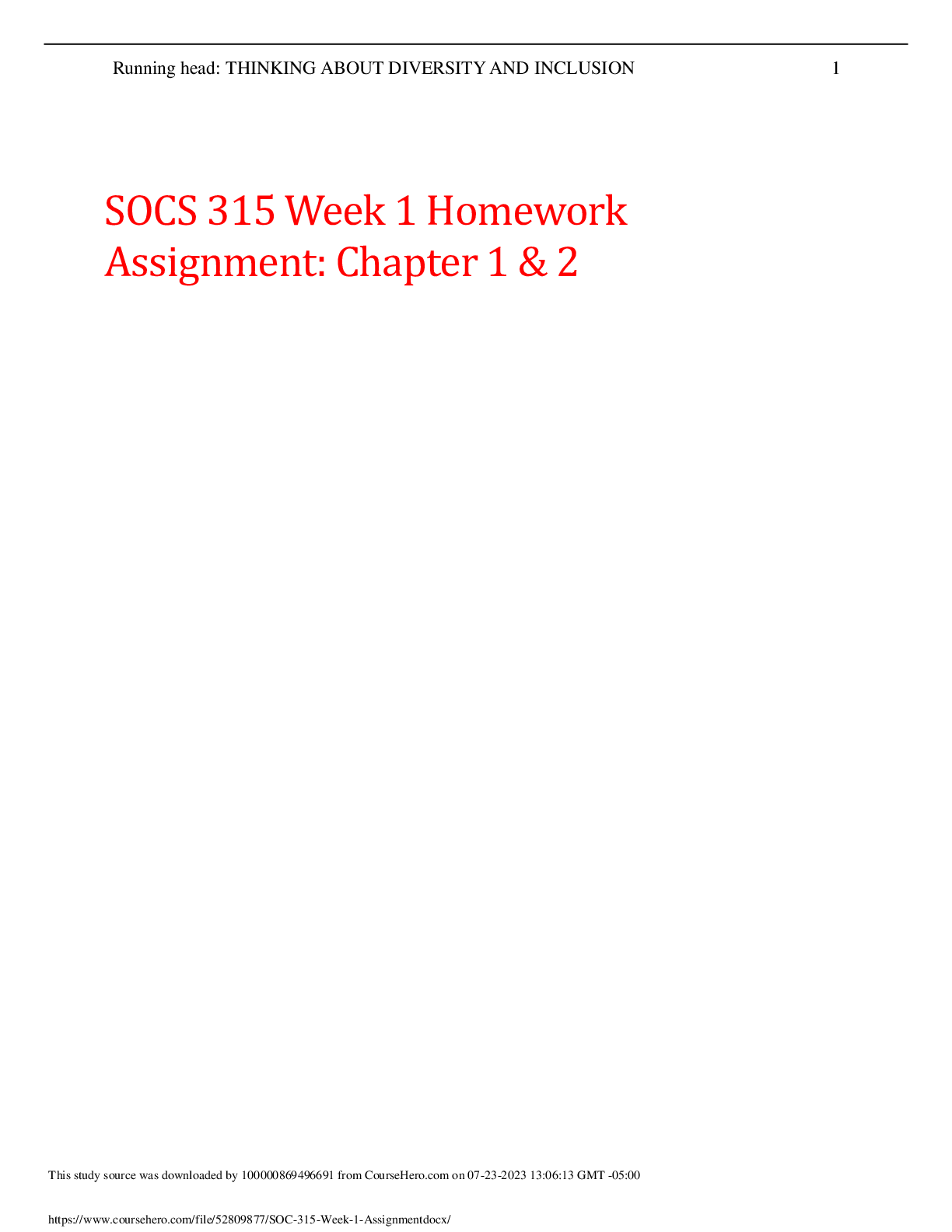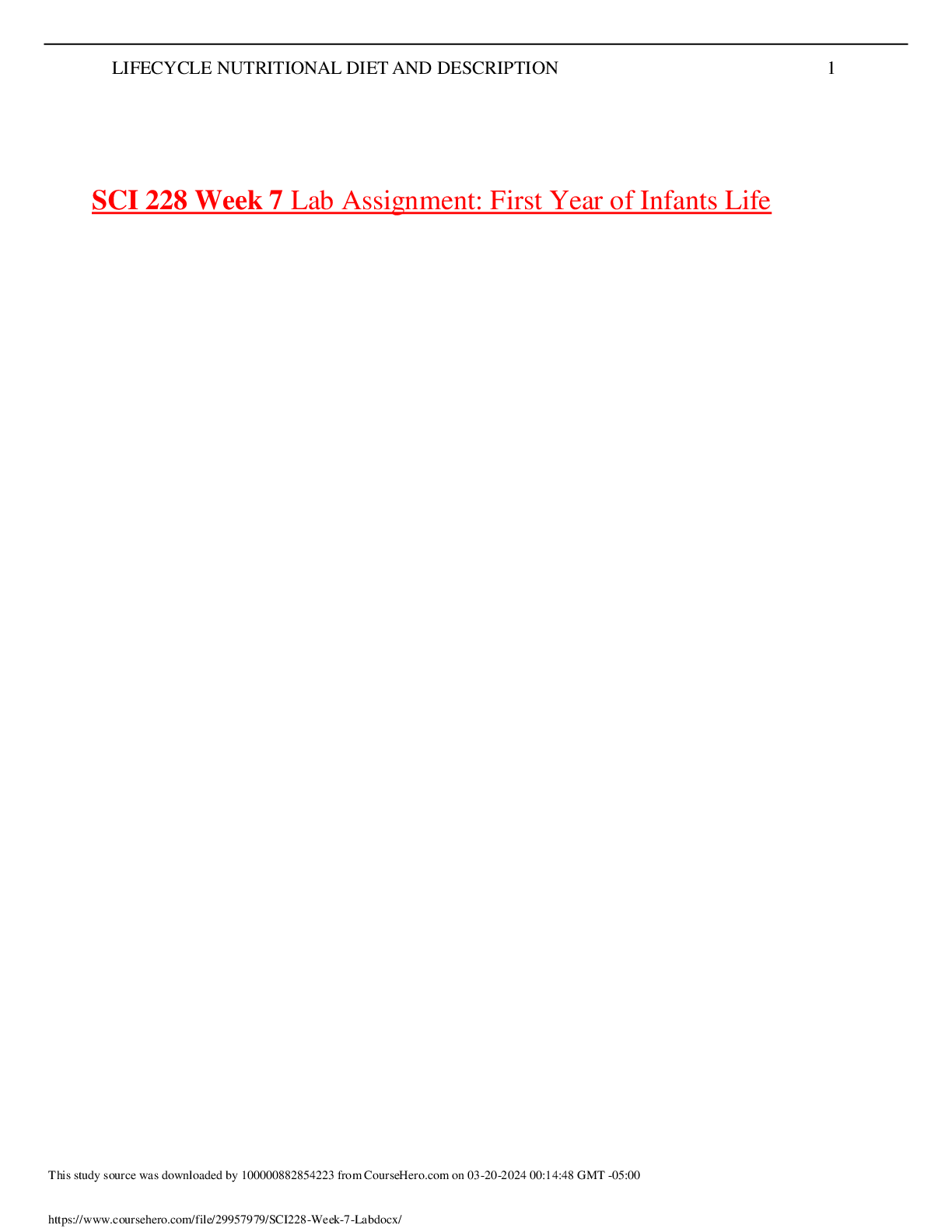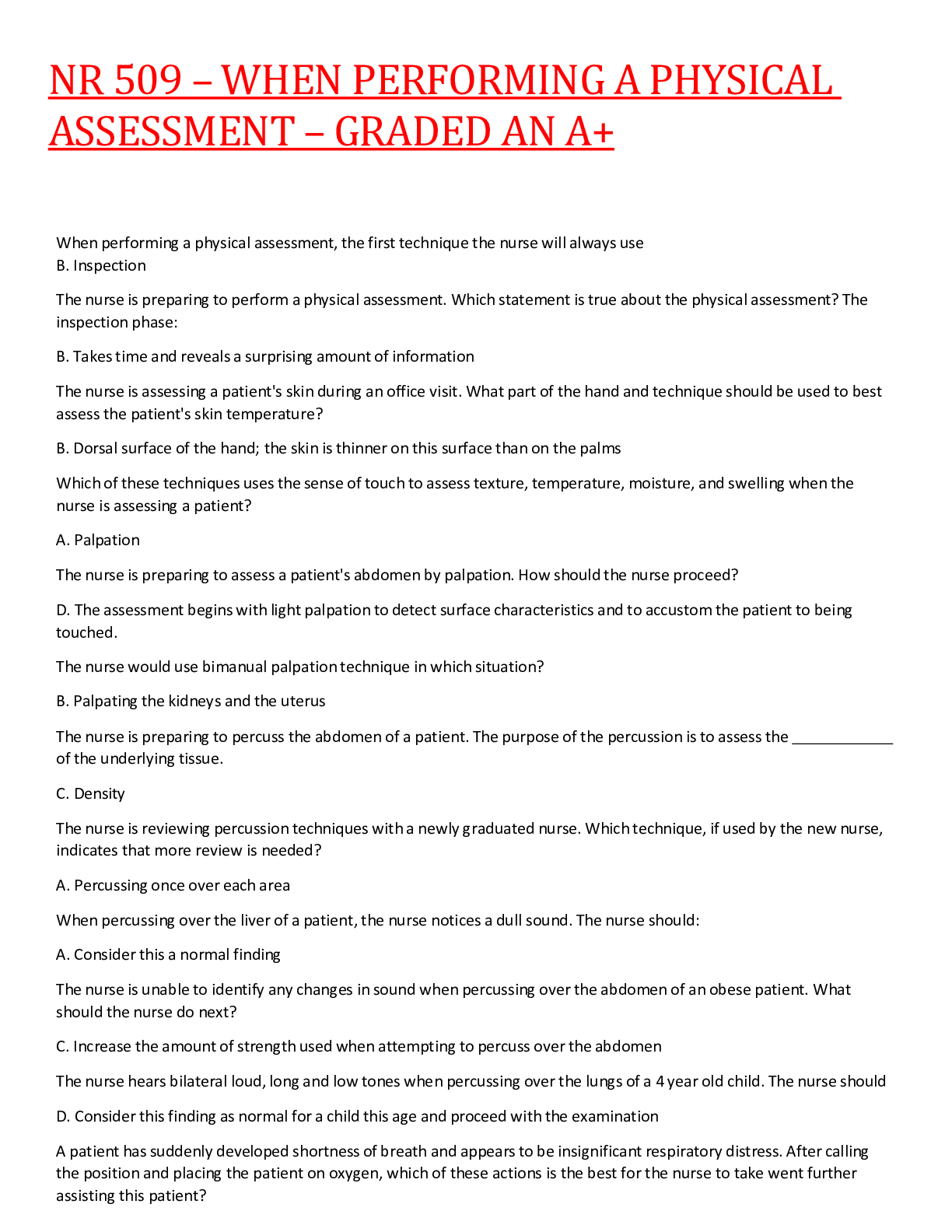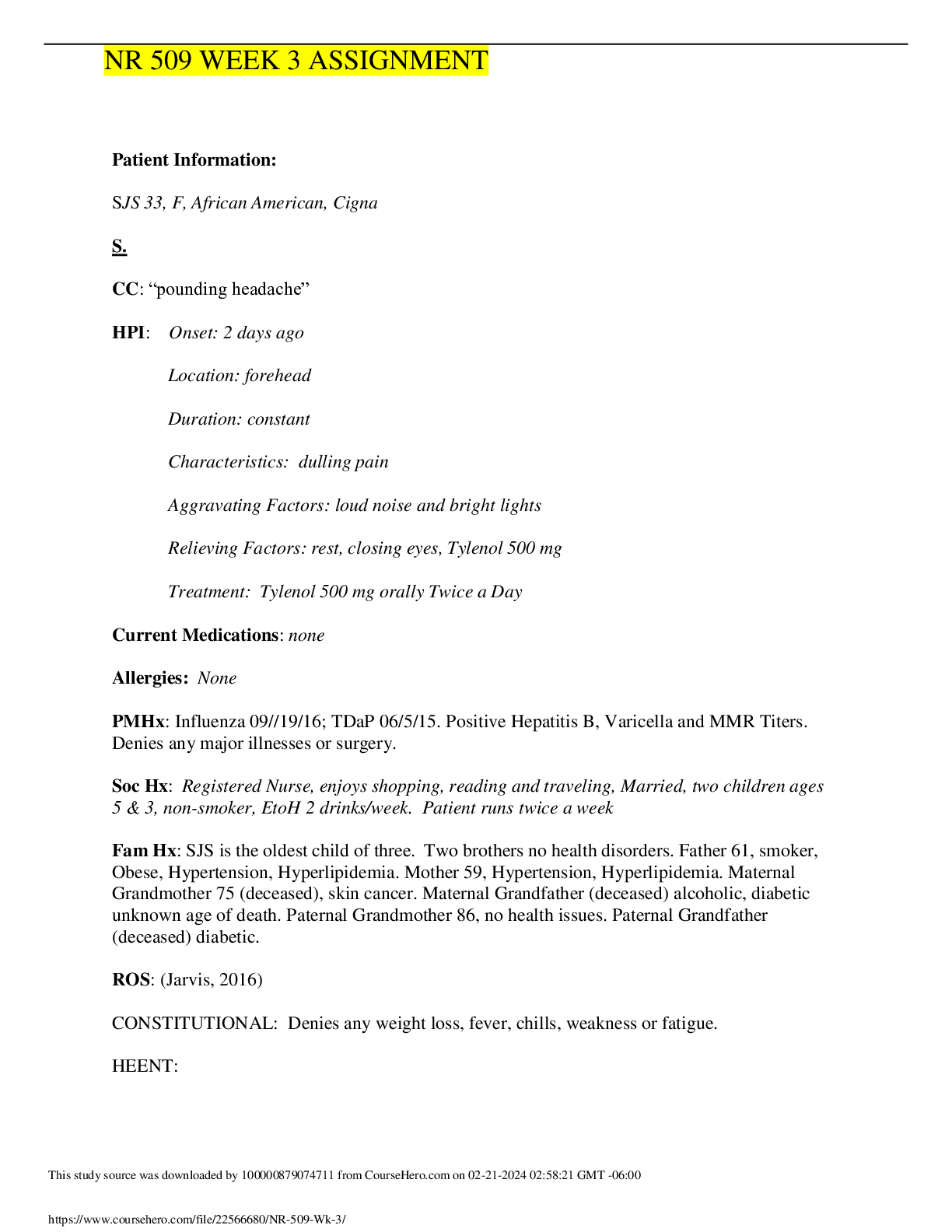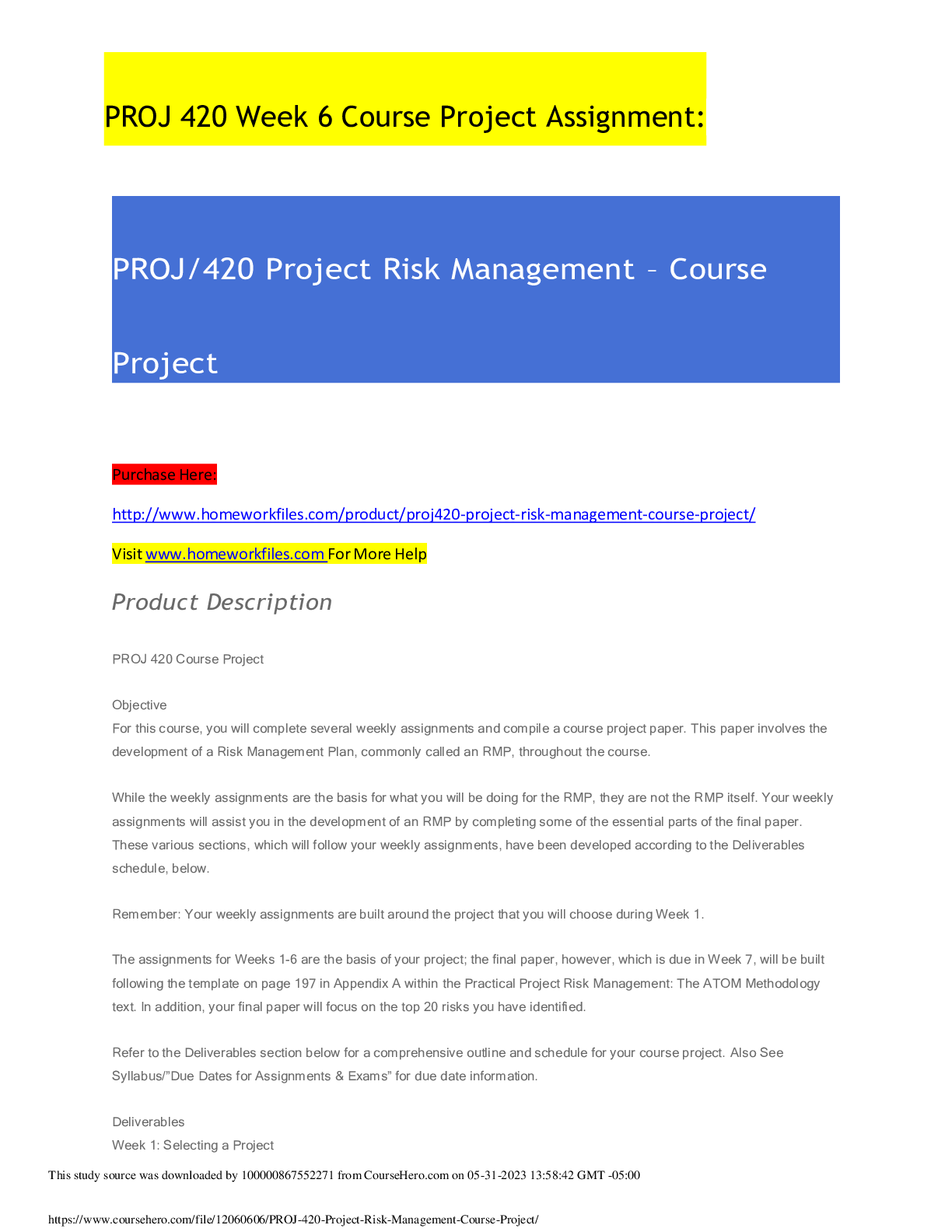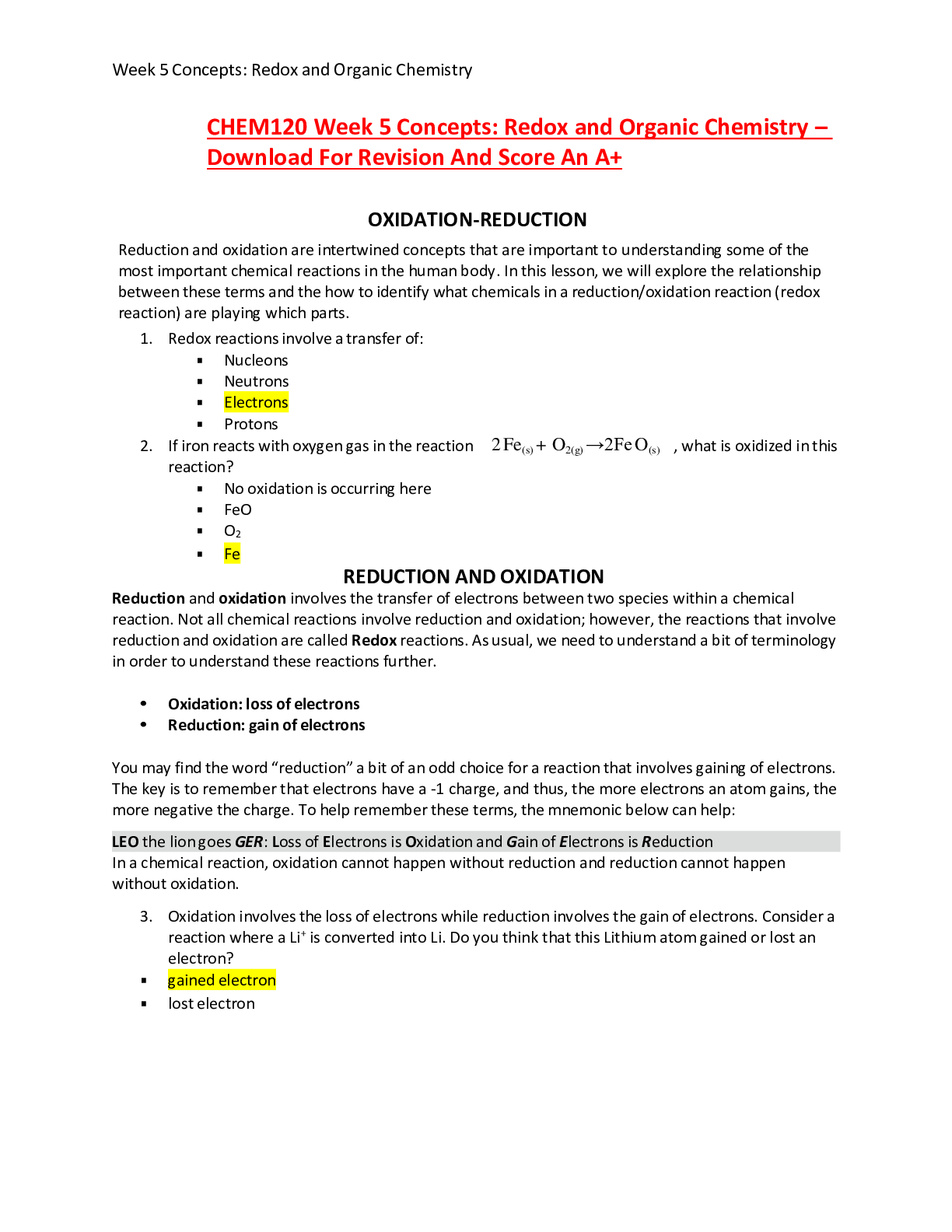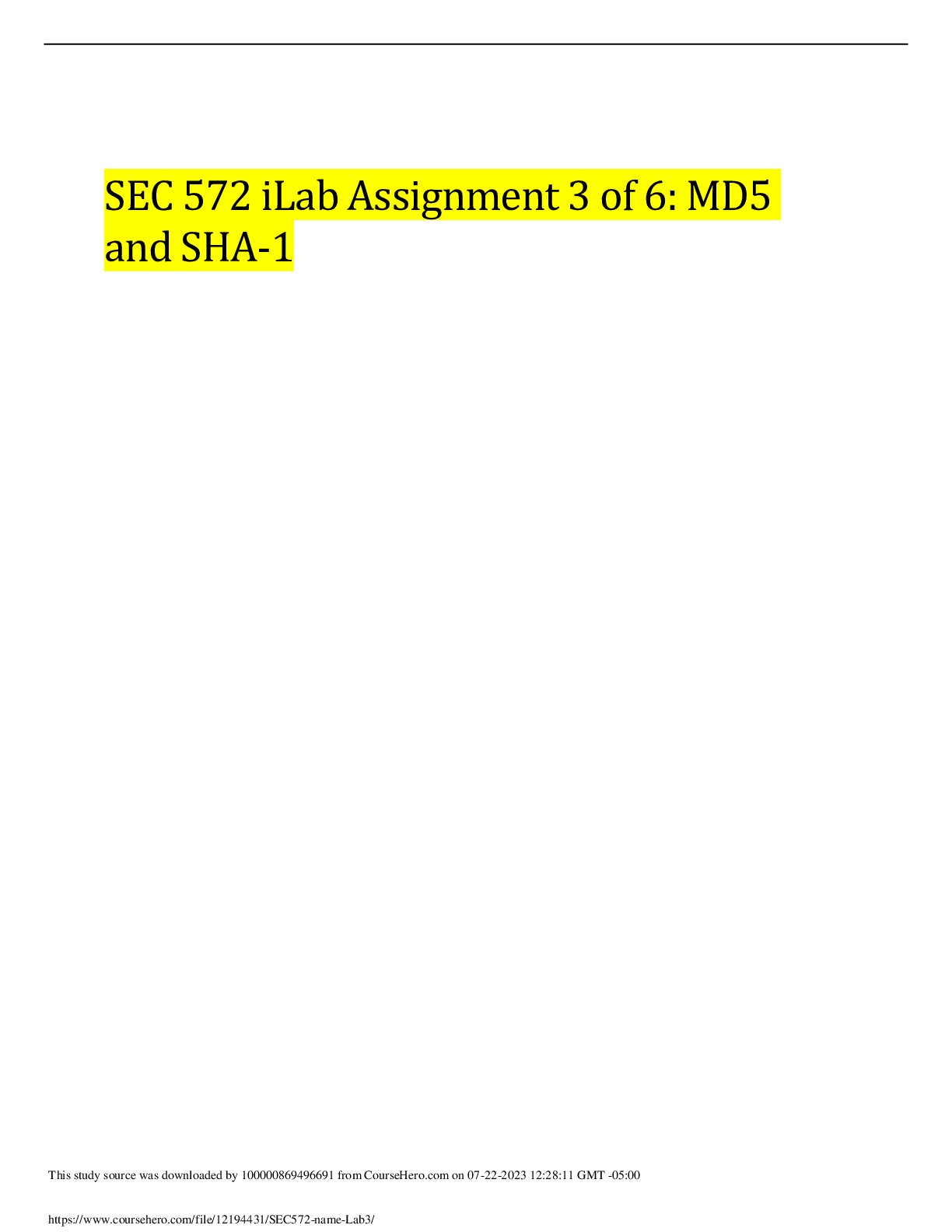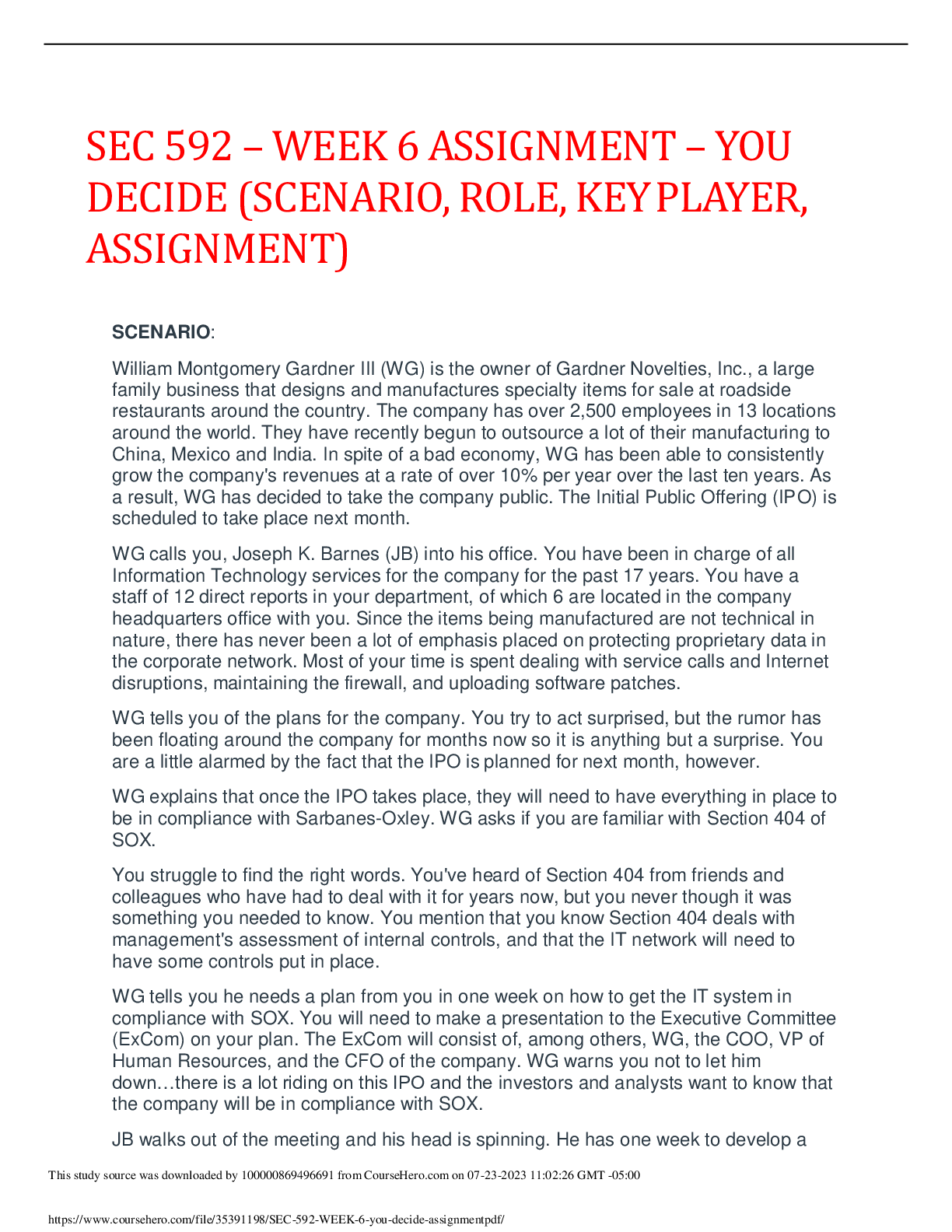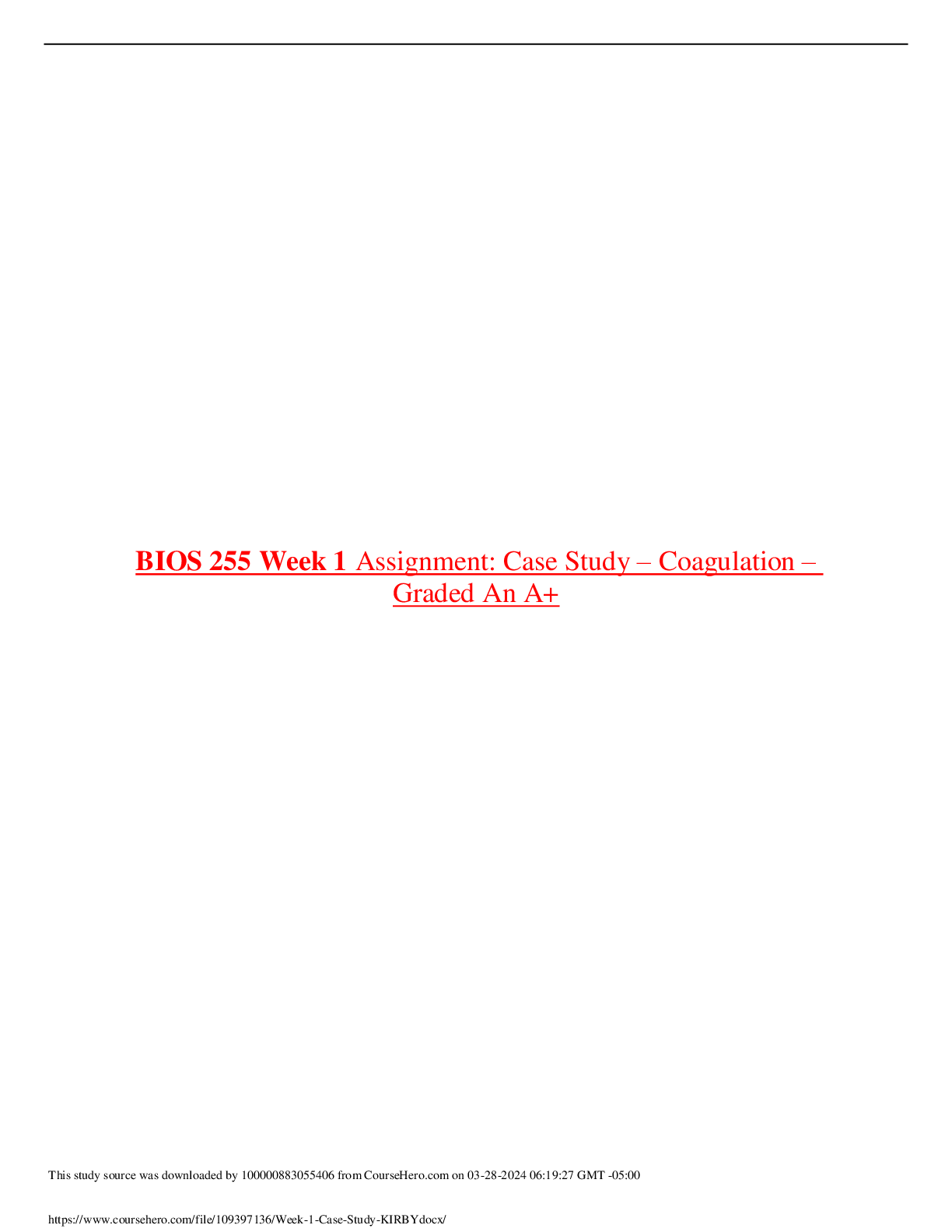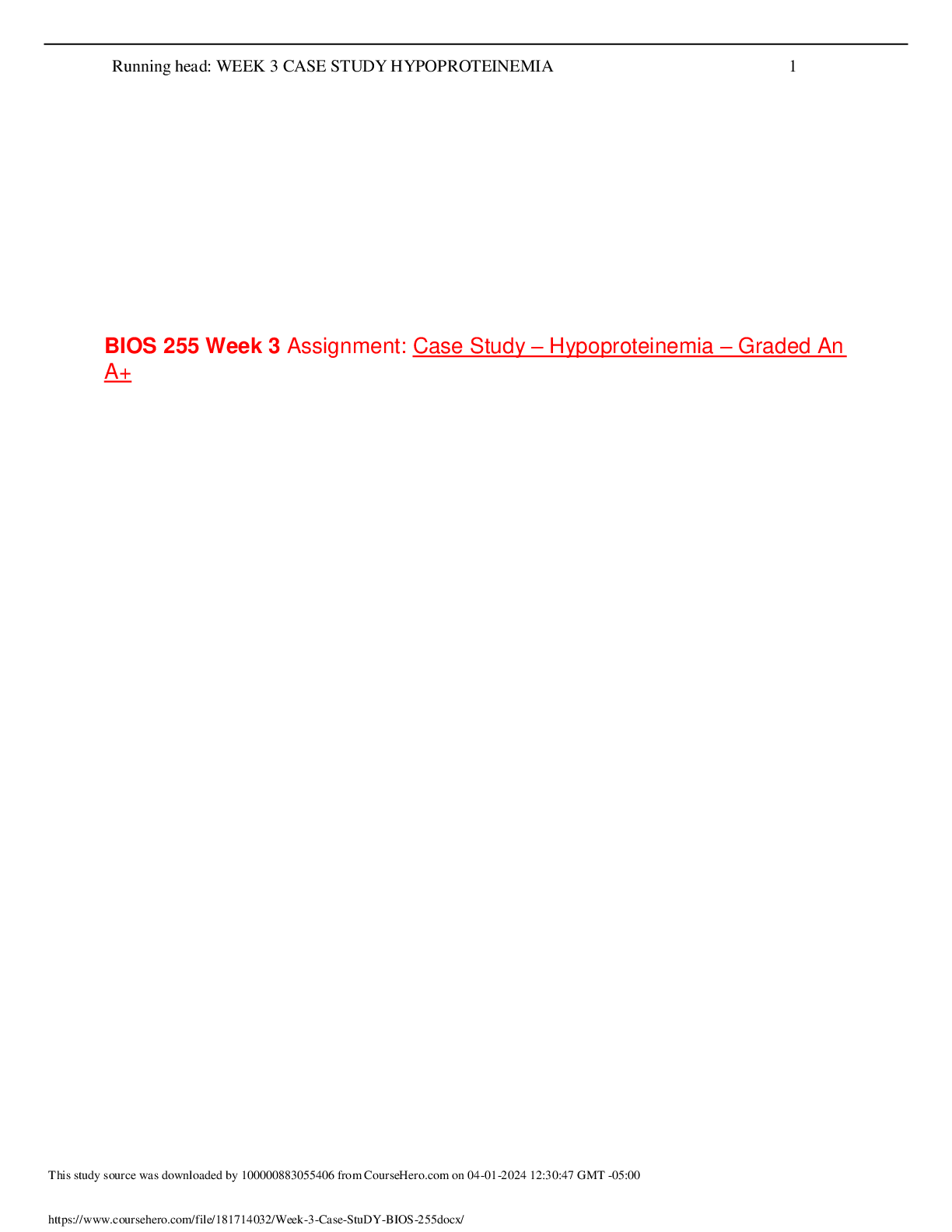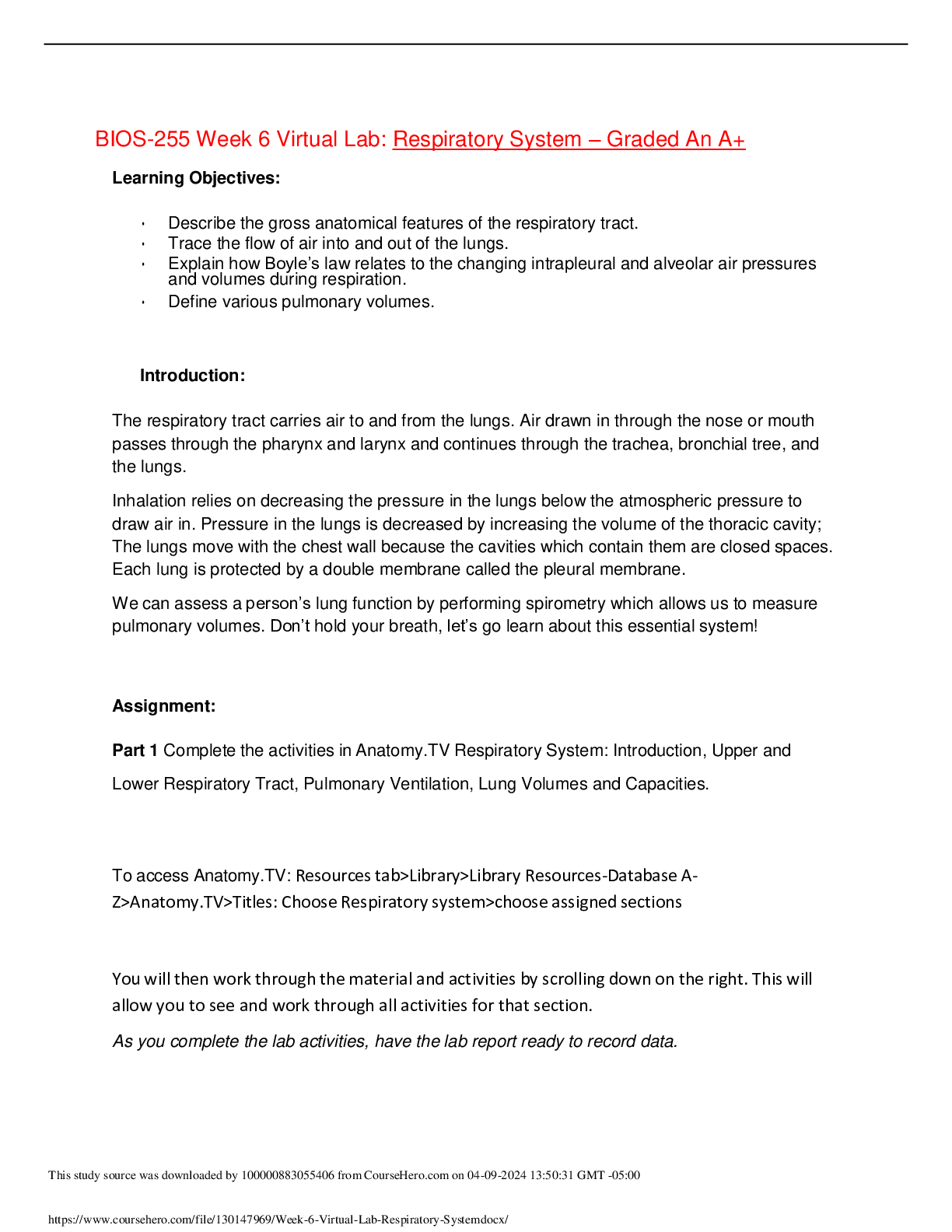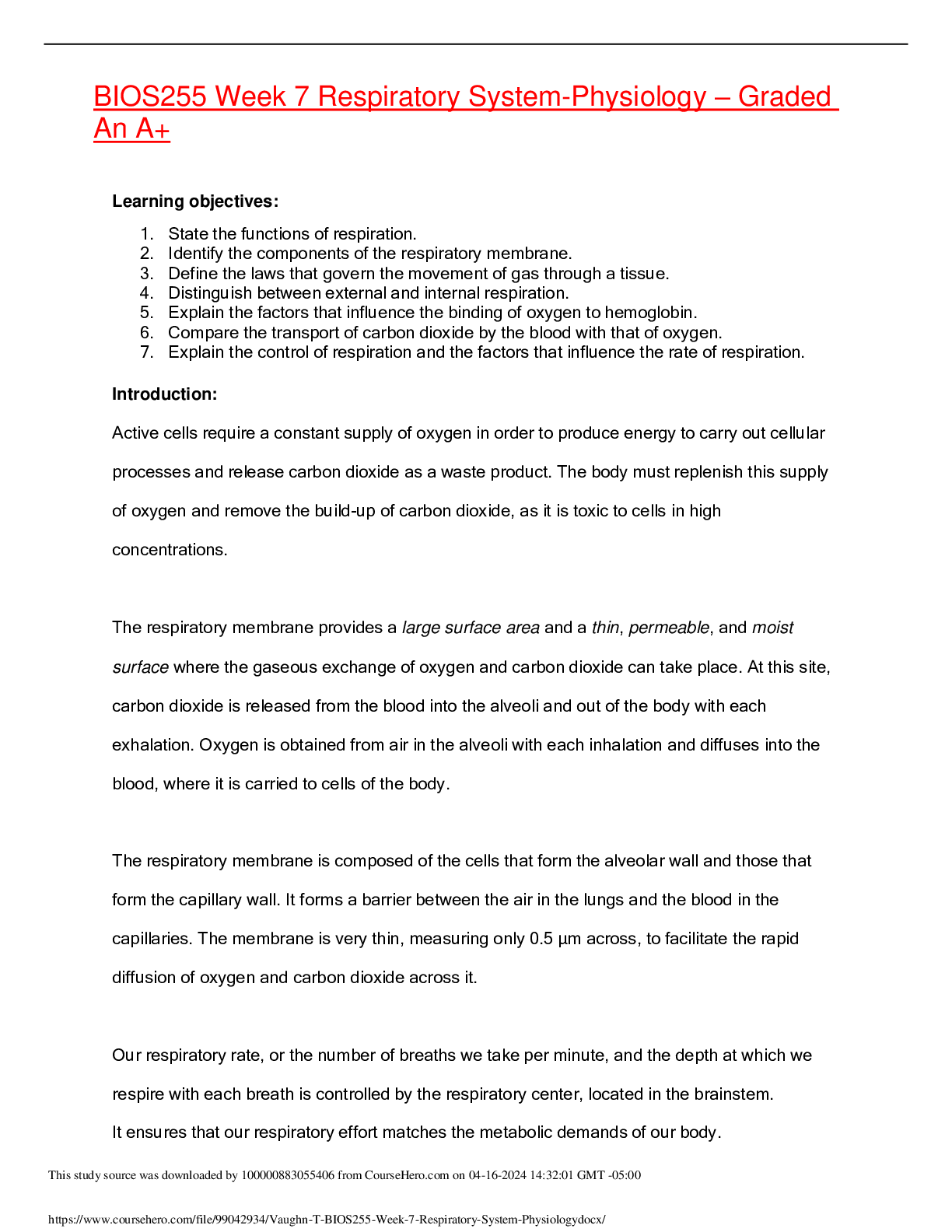*NURSING > ASSIGNMENT > BIOS-255 Week 1 Virtual Lab: Hematology Part I, Part II, Part III - Graded An A+ (All)
BIOS-255 Week 1 Virtual Lab: Hematology Part I, Part II, Part III - Graded An A+
Document Content and Description Below
BIOS-255 Week 1 Virtual Lab: Hematology Part I, Part II, Part III - Graded An A+ Week 1 Blood Learning Objectives: • Identify the cellular components of blood and state their functions. �... � Explain the role of the white blood cells in protecting the body from disease. • Analyze complete blood counts. • Learn how to use an automatic hematology analyzer and how to prepare a peripheral smear. • Name the 4 major blood types in the ABO system. • Explain the principles of blood typing using Eldon cards. • Describe Rh incompatibility and hemolytic disease of the newborn. Introduction: The body is a complex multicellular organism that comprises trillions of cells working together as tissues, organs, and systems. These cells require a continuous supply of oxygen and nutrients in order to function. They also need an efficient and fast means of delivery of these substances as well as a means of removing waste byproducts. Blood is composed of 2 components: blood plasma and the formed elements. In the first lab simulation, you will generate complete blood counts and prepare blood smears of control and patient samples to diagnose various blood disorders in three patients. Dive into the inner workings of the different blood components with immersive 3D animations, where you will get acquainted with the morphology and function of red blood cells, white blood cells, and platelets. In the second lab you will learn the basics of antibodies. Even though antibodies are proteins that protect us from harmful intruders, they can sometimes cause problems. You will learn about antibody-antigen interaction and the mechanism that lies behind Rh incompatibility. You will discover what antigens and antibodies have to do with blood type, and why mixing certain different blood types together can cause problems. In this simulation, you will examine blood samples from a mother and her unborn child, to determine whether or not they are compatible. Assignment: Part 1: Complete Labster “Hematology: Introduction to Blood” As you complete the lab, have the lab report ready to record data. The theory section of the lab is a useful resource. Part 2: Complete Labster “Antibodies: Why are some blood types incompatible?” As you complete the lab, have the lab report ready to record data. The theory section of the lab is a useful resource. Part 3: Complete the Lab report. Blood Lab Report Answer the following questions: Part 1 Lab questions: 1. CBC and Blood smear test are the two tests. Identify the WBCs: (1 point each) a. b. 2. Record the Data: (3 points) Patient CBC abnormality Peripheral smear result Patient 1 Elevated WBC & Low platelet count Parasites visible inside RBCs, suggesting it's an intracellular blood parasite Patient 2 low hemoglobin (Hb), hematocrit (HCT) and corpuscular volume (MCV) Abnormally shaped RBCs in the blood smear, consistent with sickle cell anemia Patient 3 none Normal blood smear 3. What is the importance of a complete blood count? (1 point) The importance of CBC is to validate a diagnosis and get a better view of the amount of blood cells present which can detect a wide range of disorders such as anemia, leukemia, viral, and bacterial infections. 4. What information does a peripheral smear add to the results of a complete blood count? (1 point) A peripheral smear add to the results of a complete blood count confirms the diagnosis of the CBC and provides a view of the morphology of the cells, to obtain a clear image of the blood cell morphology 5. Identify the diagnosis of the 3 patients in the Part 1 Labster lab as determined by their CBC and Peripheral Smear results. (3 points) Patient 1: malaria Patient 2: sick cell anemia Patient 3: hemophilia Part 2 Lab questions: 6. When is Rh incompatibility an issue for a pregnant woman and her baby? (1 point) Rh incompatibility is an issue for a pregnant woman and her baby in the second pregnancy. 7. What do the antibodies in the “Anti-D” test circle detect? (1 point) Anti -D means antibody D which binds to antigen D. Antibodies in the Anti D test circle detects rhesus antigen.so if anti-D antibodies are detected in blood during pregnancy, there is risk for unborn baby to have rhesus disease. 8. What is the cause of blood agglutination on the Eldon test cards? (1 point) On the ELDON test card, the dried antibody reagents appear as spots colored green for Anti-A, red for Anti-B, and yellow for Anti-D. The test is carried out by dissolving the dry reagent with a droplet of water in each circle and combining it with blood. When the wrong blood group is dissolved, the dried antibodies reagents react with the wrong blood group, allowing the erythrocytes to clump together and bind together, causing them to agglutinate. 9. Why can agglutination be lethal for a patient when it occurs during a blood transfusion? (1 point) Agglutination can cause blockages in the patient’s blood vessels. 10. Why is blood type O neg called the “universal donor”? (1 point) There are no antigens on the red blood cells that can be recognized as foreign. Grading Rubric for Lab Report Activity Deliverable Point s Part 1 Complete Labster “Hematology: Introduction to Blood” 10 Part 2 Complete Labster “Antibodies: Why are some blood types incompatible?” 10 Part 3 Complete lab report 10 Total Complete all lab activities 30 [Show More]
Last updated: 4 weeks ago
Preview 1 out of 7 pages
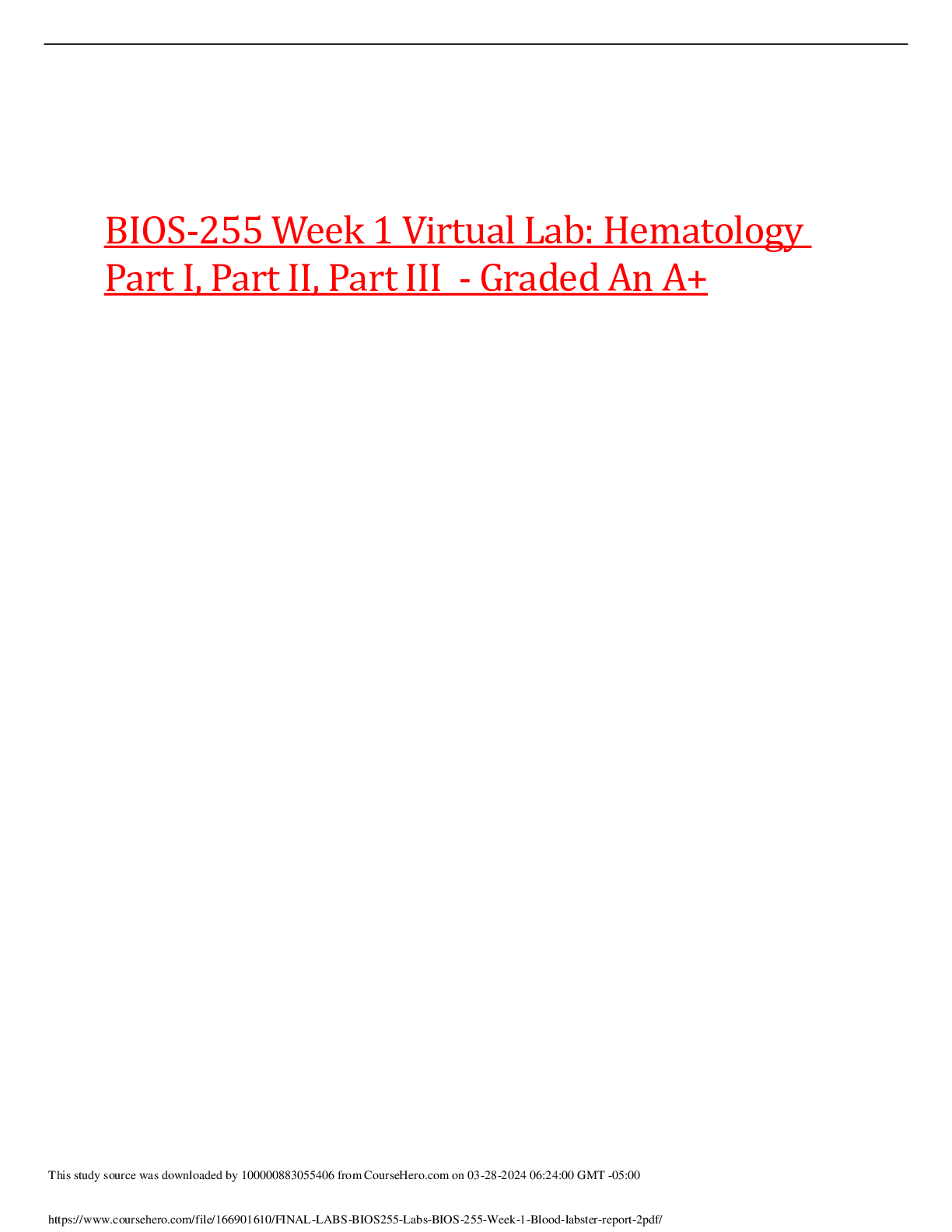
Reviews( 0 )
Document information
Connected school, study & course
About the document
Uploaded On
Mar 29, 2024
Number of pages
7
Written in
Additional information
This document has been written for:
Uploaded
Mar 29, 2024
Downloads
0
Views
23

